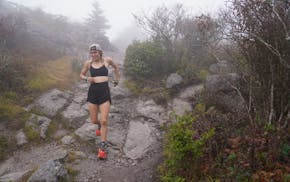DULUTH – All-terrain vehicle riders who take to trails in northern Minnesota are spending noteworthy amounts of money and creating job opportunities, according to a study commissioned by the University of Minnesota Extension and the Northeastern Minnesota ATV Joint Powers Board.
Hundreds of thousands of riders who spent time on trails in St. Louis, Lake and Koochiching counties in 2023 brought in about $36 million in economic activity in that year, according to the study released Tuesday at a news conference at the St. Louis County Courthouse.
Between 2019 and 2024, ATV clubs, government entities and other organizations invested $11.7 million in trails, which generated $16.8 million in economic activity — including $6 million in labor income and 100 jobs, according to the study.
The news wasn't surprising to local lawmakers and stakeholders, but it's data they wanted to see more clearly.
"We were getting a lot of funding from various groups for trail development and we needed data to back up that this funding was working to bring economic development, tourism, money to northeastern Minnesota," said St. Louis County Commissioner Paul McDonald, who chairs the ATV Joint Powers Board.
It was specifically this sport that drew most of the 219,000 riders — 80% of whom were visitors who traveled at least 50 miles to get there. Travel groups ranged from six to seven people, and visitors, who tend to stay for more than four days, spent about $144 per day. Their money went mostly toward lodging, followed by spending at restaurants and bars.
Local ATV riders spent about $38 per day, primarily on food and drinks.
As part of the study, 1,000 riders were surveyed, both locals and visitors, and regional ATV clubs put out counters along Alborn-Pengilly, Prospectors, Chisholm, East Range and Voyageur Country trails.
Survey respondents, who came from 63 different Minnesota counties and 14 different states and the District of Columbia, were drawn by this region's reputation.
"When we asked survey respondents 'how did you hear about it,' the most common response was via word of mouth," said Brigid Tuck, lead researcher from the University of Minnesota Extension. "There is a positive reputation out there that is bringing people to this area."
The findings could be used to leverage more money from the state and to make a case for more trail coverage in this region, according to Sen. Grant Hauschild, DFL-Hermantown.
"We need to make the case to other legislators from the Twin Cities, from Mankato, from other places that, look, your people own these licenses, they own these ATVs, and they're coming to our region to utilize our outdoors and our land for their benefit," Hauschild said.
Between 2005 and 2020, registrations for ATVs increased by 36%, according to the study.
ATVs have gotten a bad rap in the past, said Ron Potter, president of ATV Minnesota. He credits the development of organized ATV clubs with changing that. Ten years ago there were no clubs, he said. Now there are 70 in Minnesota.
"And they're stepping up," Potter said. "They're maintaining the trails. They're doing environmental reviews before the trails are built. We're partnering with equestrian clubs, snowmobile clubs. So I think acceptance of that activity has went up because riders have stepped up and done their part to be responsible."

At least 31 Palestinians are killed while heading to a Gaza aid site, officials and witnesses say

After talks with Zelenskyy and Macron, US senators warn: Putin 'is preparing for more war'

Golden Valley puts police chief on paid leave

Can Trump fix the national debt? Republican senators, many investors and even Elon Musk have doubts
